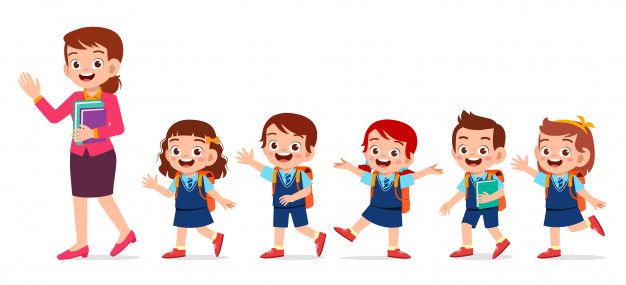🧸 Teaching Young Children: A Detailed Overview
Teaching young children — typically between the ages of 2 to 8 years — is one of the most important and sensitive aspects of education. This stage, often called early childhood education (ECE), lays the foundation for lifelong learning, emotional development, and social skills.
✨ Why Early Childhood Education is Important
- Brain Development: 90% of a child’s brain development happens before age 5. Stimulating experiences during this time strongly shape a child’s future cognitive, emotional, and social abilities.
- Social Skills: Early group learning environments help children learn sharing, empathy, cooperation, and communication.
- School Readiness: Children who attend quality early education programs tend to perform better academically later in life.
- Confidence Building: Positive early learning experiences boost self-esteem and create a love for learning.
📚 Key Principles in Teaching Young Children
- Learning Through Play
- Play is a child’s natural way of exploring the world.
- Structured and unstructured play activities develop creativity, problem-solving, and language skills.
- Child-Centered Approach
- Focus on the interests, strengths, and developmental stage of each child.
- Flexible teaching plans based on the child’s curiosity and pace.
- Hands-On Experiences
- Activities like painting, building blocks, gardening, and cooking allow children to learn by doing.
- Positive Reinforcement
- Encourage and praise efforts, not just outcomes.
- Build confidence by celebrating small achievements.
- Consistency and Routine
- Predictable routines create a sense of security and help children understand the concept of time and responsibility.
- Holistic Development Focus
- Teaching is not just about academics but also about emotional intelligence, moral values, and physical skills.
🎨 Effective Methods for Teaching Young Children
| Method | Description | Example |
|---|---|---|
| Storytelling | Enhances imagination, language, and listening skills. | Using puppets to narrate folk tales. |
| Songs and Rhymes | Improve memory, rhythm, and vocabulary. | Singing the alphabet song. |
| Visual Aids | Help children grasp abstract ideas. | Using colorful charts and flashcards. |
| Role Play | Builds empathy and communication skills. | Setting up a pretend grocery store or doctor’s clinic. |
| Group Activities | Teach teamwork and cooperation. | Group art projects or circle time discussions. |
| Outdoor Exploration | Connects children with nature and physical exercise. | Nature walks, observing plants and animals. |
🌟 Qualities of a Good Early Childhood Teacher
- Patience: Every child learns at their own pace.
- Creativity: Finding new ways to make learning fun and engaging.
- Empathy: Understanding children’s feelings and emotions.
- Communication Skills: Explaining concepts in simple, clear language.
- Observation Skills: Noticing small changes in behavior, mood, and learning styles.
🏡 Role of Parents and Caregivers
- Extend learning at home through simple activities like reading together, playing educational games, and asking open-ended questions.
- Collaborate with teachers to understand the child’s progress and needs.
- Provide a nurturing and stimulating environment.
🌱 Conclusion
Teaching young children is not just about preparing them for school — it’s about preparing them for life. By combining love, patience, and innovative methods, teachers and parents can unlock every child’s potential, shaping them into confident, kind, and curious individuals.

